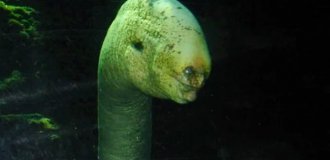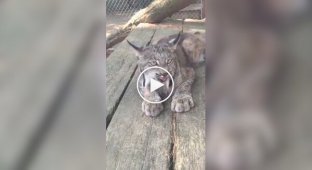How do ants hunt? A selection of combat strategies that will make your head spin (10 photos)
Ants are the most feared predators in the insect world. Even those that are dozens of times larger tremble before them: spiders, beetles, grasshoppers. For over 100 million years, social insects have been honing their killing skills. And the most interesting examples of ant hunting are in this article. 
Guys, hold him, he wants to call his ex again!
Some ants use a sting. Yes, just like bees or wasps. For example, red myrmica. They live from Spain to Transbaikalia. Small, angry, and biting insects are solitary hunters. They are smaller and weaker than the forest ants we are used to, but they have a dangerous weapon - a sting with paralytic poison. Its sting is about as painful as a sting from a small bee. But for insects less than a centimeter long, it is almost guaranteed to be fatal. 
Oh, sausage on sale, we need that...
In the jungle, insects are more dangerous, and the competition is higher. Therefore, tropical species of ants have greatly modified. Jumping venator ants from South America, for example, have relied on surprise. They have large eyes, thanks to which they can spot prey from afar. And also strong legs, adapted for jumping. Having noticed a potential meal, the venator tenses up, comically shakes its belly, like a cat, and suddenly rushes at the prey. Often the victim does not even have time to realize that long, tweezers-like jaws have closed around it. And then everything is like with the myrmics: a sting with paralyzing poison in the liver - no one lives forever. 
Even though the cricket has strong jaws, it cannot win this battle.
An alternative route was taken by the Odontomachus, known to the general public as "trap ants". Ants from the Asian jungle have turned their jaws into a guillotine. It closes in just 1/10 of a millisecond. For comparison, the reaction speed of an average person is 200-300 milliseconds. Not only does the prey not have a chance to react, the force of the blow leads to serious injuries: from breaking through the chitinous shell to sudden decapitation. Even if the prey survives the blow, it cannot escape from the snapped jaws. 
The trap is activated.
All the methods discussed above are united by one principle - they are suitable for insects that live in small nests of up to 1000 individuals. In them, each family member can stand up for himself in any situation. But there is another view on the problem of obtaining food. Residents of ant megacities devote much less time to hunting. These species value versatility more than fighting skills, so individual ants are noticeably weaker and more vulnerable. But they compensate for physical deficiencies with teamwork. 
Come alone, we will come alone too.
When hunting, forest ants gather in crowds, grab their prey by the limbs and spray formic acid into its face. Half-blinded and deprived of their sense of smell, the insects cannot resist the chitinous horde, even if they are tens of times larger than their opponents. This tactic is so effective that a large colony of forest ants can destroy up to 5,000 insects per day! 
This is me and the number of tasks I need to solve before the end of the year.
However, this tactic can also be pumped up if you add a drop of violence to it. Formica archboldii ants attracted the attention of scientists back in the 1950s with their brutal cruelty. They hunt trap ants from the beginning of the article. But they do it... in a peculiar way: they dismantle the bodies of their victims for spare parts, and lay out the heads of the Odontomachus on the surface of the anthill. 
Look, my skull collection! Do you like it?
Only last year, researchers were able to understand the reasons for their maniacal behavior. The ants are driven by cynical pragmatism. Dismembering the bodies of the dead is an excellent way to soak up their pheromones and disguise themselves as an enemy. Troops of such "disguised" insects approach the trap ants almost point-blank and shoot them with formic acid. The mixture of the sharp smell of the acid and friendly pheromones makes them so confused that they cannot resist. 
In appearance, the skull collectors are almost indistinguishable from our forest ants.
Aztec ants approached hunting with engineering ingenuity. They formed an alliance with several species of South American trees. The plants provide them with shelter and nectar, and the fed insects hunt insect pests in return. The Aztecs constantly patrol the host tree, and set up real checkpoints on the trunk and largest branches! 
This is our tree, get out of here, got it?
Checkpoints are usually built from clay and earth and are a thickening wrapped around the trunk with numerous holes. Border guards hide in these holes. If a border violator tries to break past, he will be immediately surrounded and dragged into one of the openings. And not always in one piece. 
They didn't let me through customs...





















